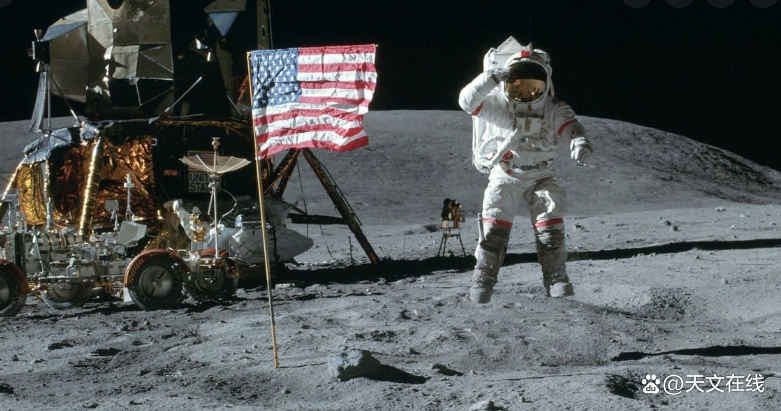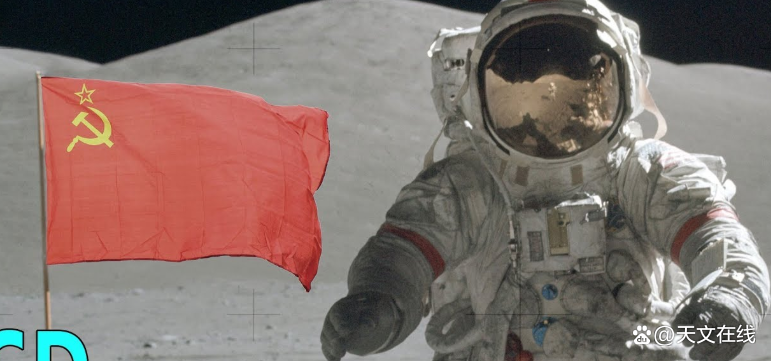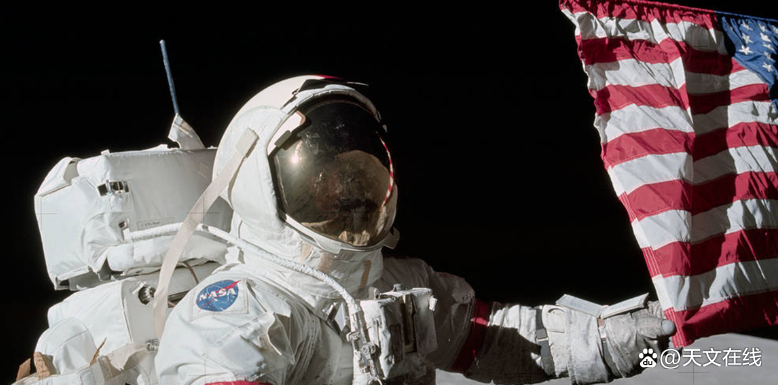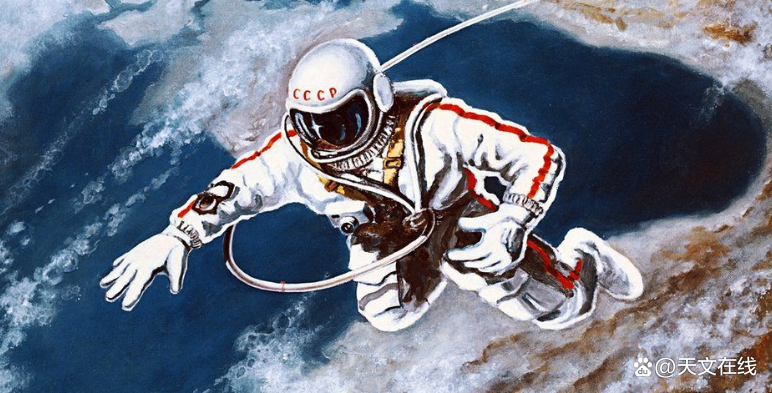Why doesn't Russia go to the moon, is their technical problem or what they have discovered?
Author:Astronomy online Time:2022.06.22
On July 20, 1969, it was a day worthy of the history of history. In most of the next ten years, the United States won the space competition and achieved the manned lunar moon. It is still evenly matched, but the Soviet Union and the current Russia have not achieved this goal. So, what stopped the moon landing plan of the Soviet Aerospace? This is a special question we have released; why did Russia never board the moon? Are you fascinated by this truth? Do you often feel curious?

The reason why the Soviet Aerospace was not ascending the surface of the moon and the reason why the United States was put on the Apollo plan in 1972, which was also lacking potential. After completing several manned flight mission, it is said that NASA believes that there is no practical benefit in the moon and sending humans to the moon.

Sending a humans to go up, rather than the initial goal of the detector is to win the moon competition, but because the United States has done it on Apollo 11, just a few years later, the excitement and necessity of the Soviet Union did the same thing -the Soviet Union weakened — Just like NASA's own. However, in fact, this story is not just "one party has given up, and the other is the first to set aside", and the Soviet Union did not give up the entire moon landing plan because the United States arrived first. In the late 1960s, one of the biggest issues facing the Soviet Space Program was how to deal with the departure of Sergei Coloolov. The genius of the chief engineer allowed the Soviet Union to achieve many other victories in the space competition.

They may miss the first person to board the moon, but the Soviet Union actually realized various spaces, including the construction and launch of the first satellite, sent the first animal into space, and the first person. The first unmanned spacecraft to reach the moon was also a Soviet machine, the Moon No. 2 launched in 1959. Most of these successfuls were at the helm, but he died in 1966. According to some people, the Hope of the Soviet Union sent astronauts to the moon was also broken. Without Corolov, the entire plan was in trouble.
The key is that Korolov has planned the original design of the N1 Rockets, which is the Saturn 5 rocket used by the Soviet Union equivalent to the US Aerospace Administration -at least, if they can let the rocket operate, it will have this like this. of. Corolhv died before his plan was improved, and without his guidance of the rocket construction, he was in a hurry, insufficient funds, and poor management ... This led to a series of catastrophic launch failures from 1969 to 1972. Then a high -profile launch cancellation in 1974, before the N1 rocket was put on hold in 1976. This is "back to the drawing board". Except for Korolov, this has never really happened ... and the Soviet moon mission has never made progress, which is a bit literally.

No matter how much the Soviets want to send the astronauts to the moon, they did not have this technical ability at that time. However, there is no doubt that it is not just the Soviet Space Project (today's Russian Federal Aerospace Bureau) has not yet reached the nearest satellite moon. No one except the American Aerospace Administration. By 2020, there are more than a dozen aerospace institutions operated by the government, as well as more national sponsorship initiatives and many private companies committed to similar goals. In the six major space agencies, the National Space Agency, the Russian Federal Astronaut, the European Aviation Administration, the Japanese Universe Aviation Research and Development Agency, the National Aerospace Administration and the Indian Space Research Organization — the National Space Agency is still the only one who can send humans to humans Last moon, and since 1972, they have never returned.

Since the Soviet Union became the first country to "not go", the situation has changed greatly, and the world's priority in space has changed ... but the cost is still a big problem. We now have more understanding of the moon than before, but it may be more and more difficult to prove that most of the post -80s, post -90s and post -00s may be reasonable to prove that the cost of flying and landing in the moon is reasonable. Yes, there is the potential for mining resources on the moon, but this potential is not enough to convince any government to provide sufficient funds to support human landing on the moon.
Earlier, some people may say that the Soviet Union did not go because they couldn't go, but in recent years and decades, the Russians are likely to not leave because they don't want to leave. That is to say, it seems that the early Soviet plan did not stop immediately after Neil Amsterram's famous first step. In fact, the ambition of the Soviet Union briefly expanded into bigger things. Due to the change in the focus of the 1870s, the new ideas and initiatives were pushed to the front and other people by the Soviet Union and others.

American physicist Gerald. O'Neal plans to build a large -scale rail city in outer space, allowing people to live in a huge cylinder, O'Neal cylinder. This was one of the most ambitious universe space plans at that time, which caused a lot of sensation in this field. At that time, Soviet aerospace also studied under the study of outer space colonies, but it was obviously only part of its lunar landing plan. The N1 carrier rocket is expected to be used for multiple aerospace tasks, such as the construction of the lunar base, the "Star" service capsule. However, due to the repeated failure of the N1 rocket launch experiment, the construction plan of the "Star" service capsule has also been postponed. In the end, the Soviet Union officially canceled the project, which means that its manned moon landing plan ended in failure. However, the achievements of Soviet aerospace people in space competition are still unquestionable. They are the pioneers of robot space exploration. Most of the early satellites and detectors were launched by them. The number realized the first soft landing of other planets. In addition, the Soviet Union also developed the first lunar car, which is vital to the development of its future lunar plan. There are two lunar cars in the Soviet Union landing in the moon in 1970 and 1973. Although the Runo Hodle plan is not comparable to the romance of the manned lunar month, the space personnel of the Soviet Union and other countries quickly realized that The benefits of the lunar exploration of the robots are quite abundant.
Robot exploration of the moon is more economical, without providing water and food, and they can continue to operate. In addition, the processing and upgraded robot detectors can also be competent for a large number of artificial tasks. The most important thing is that its hidden safety hazards are small, because the machine failure brings only the loss of money, not the loss of life. This is also one of the reasons why humans have launched a large number of Martian detectors in recent decades. With these great Martian explorers, humans do not have to risk their lives, and they can also dig out Mars' secrets.
Lunoho's plan was ended in less than ten years. Although it took a short time, it had a profound impact. At that time, the Soviet Union had created the three moon vehicle, but did not launch in accordance with the previous plan. This lunar car is now used for museum exhibitions. However, it turns out that the plan is a key step in leading the development of modern Martian detectors. Today's aerospace research still benefits from the scientific results behind it, such as the manufacture of the "Curiosity" Mars in the United States. The participants of the plan have made great contributions in the cleanup of the Chel Nobel disaster. With their professional skills, they have built some practical machines that can enter the ruins of the factory and clean up the wreckage.

In the end, Lunokhod roamers were one of the last parts of the first lunar exploration project in the Soviet Union. The entire project continued from the late 1950s to the middle of the 1970s. However, in the 21st century, the Russian National Aerospace Corporation restarted the Luna Program and renamed it as "Luna-Glob". Luna25's first return mission was originally scheduled to launch in 2012, but due to delay effects, it is expected to be launched in 2021. After that, Russia also plans to issue a series of follow -up tasks, which lasted until Luna31 launching tasks.
Like the long -awaited lake suddenly rippled, Russia finally turned its attention to the moon. According to reports, all new project plans are now focused on the construction of another lunar base, and this project will be built by robotics ... Two most important ideas of the former Soviet Union's space programs in the Soviet Union will be closely combined. At the same time, although the details are unclear, it is rumored that Russia has also had further manned lunar moon landing plans in the future. Considering that the National Space Administration also shifted the center back to the moon (Arthus plan to "send the first woman and the next male to the moon by 2024) ... Indian Space Research Organization (ISRO) It is expected that in the next few years, it will send a moon car to the moon through the "Monthly Ship 3" to the moon ... And private companies, including Blue Origin and Space X, have also announced various lunar exploration plans ... Now We are all curious whether they are about to usher in the "Moon Competition: Preface". Some people have called this historical period as the period of the lunar revival!
There are many reasons why Russia has not yet appeared in the moon, including the downturn of national reputation in the late 1960s, frequent N1 rocket problems, the emergence of robot space exploration, and the priority of space travel in scientific research plan ... But,,,,,,, to,,,,, to,,, to In the 21st century, the times had changed again. Moreover, for Russia and all other space institutions or companies, the moon has no doubt that it has returned to the darling of the times.
Space exploration is to use astronomy and aerospace technology to explore outer space. Although the exploration of external space is mainly performed by a astronomer, the physical exploration is achieved by driverless space detection machines and human space flights. Like astronomy, spatial exploration is one of the main sources of space science. Although people's observations of space objects, that is, astronomy is earlier than reliable records. But in the middle of the 20th century, the development of large and relatively efficient rockets made physical space exploration into reality.

The first large-scale experimental rocket project in the world was Opel-Rak led by Fritz Von Von Opel and Max Valier in the late 1920s, which caused the first manned rocket car and rocket aircraft.The V2 plan and the United States and the Soviet Union have paved the way since 1950.The public demonstration of the Opel-Rak project and the spectacular aircraft aircraft attracted a large number of people, and also caused the so-called "rocket roar" global public excitement.Von Braun) has a huge and far -reaching impact.The concepts and reasons for exploring space in the world include deepening scientific research, improving national prestige, uniting different countries, ensuring human future survival, and developing military optimization strategies to fight against other countries.Fy: Plato has no picture, duktig, Lee Denghuan, raw

- END -
64 hours!The Japanese said that Chinese ships "broke the record"

According to CNN reported on the 24th, the Japanese authorities said on Friday tha...
Russian Ministry of Defense: The Black Army killed each other by himself

Russian Ministry of Defense: Ukraine's nationalist elements surrendered to Ukraine...